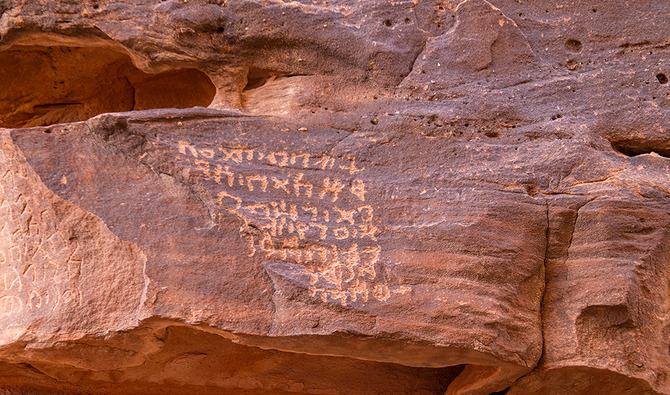Inscriptions From Ancient Arab Civilizations Found Across Saudi Arabia
Makkah — Archaeologists and historians say more than a dozen types of inscriptions from ancient Arab and neighboring civilizations have been uncovered across Saudi Arabia, providing a significant record of cultural, social and linguistic development in the region.
These inscriptions span thousands of years and offer insight into how early societies lived, communicated and documented their history.
Experts note that the most widespread inscriptions belong to the Thamudic script, considered among the oldest Arabian Islamic and Arabic-related inscriptions.
\These markings date as far back as 1200 B.C. and were mostly used for social expressions, personal messages and daily observations rather than political records.
Many of these inscriptions appear along trade routes, in open deserts and within ancient city locations such as AlUla, Najran, Tayma and Al-Jouf.
These cities served as hubs for kingdoms and commercial activity, making them natural centers for written communication and cultural exchange.
Aramaic inscriptions are also prominent, especially in AlUla, which served as the capital of the Dadanite and Lihyanite Kingdoms. These scripts date back to around 1000 B.C. and reflect the long-standing connections between northern Arabia and neighboring civilizations.
The Lihyanite inscriptions discovered in northwestern Saudi Arabia share similarities with Thamudic, Safaitic, Nabati and Aramaic dialects.
They also relate to the South Arabian script family, including the Sabaean and Minaean dialects, showing the linguistic diversity of pre-Islamic Arabia.
Researchers point to regions such as Hail as exceptionally rich archaeological landscapes. Hail is home to Jubbah, a UNESCO-recognized site containing extensive rock art and inscriptions representing various phases of Arabian history.
In addition to local scripts, inscriptions have been found in languages such as Palmyrene, Hebrew, Latin, Greek, ancient Egyptian and Babylonian.
Many of these were likely produced by merchants, travelers or soldiers who passed through the Arabian Peninsula for trade, military missions or pilgrimage.
The study of Arabian inscriptions has attracted international scholarly interest for decades. Researchers from Germany, France, the UK, the US, Canada and Japan have conducted extensive fieldwork, cataloging thousands of inscriptions and publishing detailed analyses.
According to historians, early writing in the region began as simple drawings before evolving into symbols and syllables, eventually forming fully developed alphabets. This progression was driven by the need to document laws, commercial agreements, religious practices and social customs.
Inscriptions across the Kingdom cover a wide range of themes including religion, family matters, tribal histories and economic records.
They mention deities, describe rites, note marriages or divorces, reference professions and list imports and exports.
Some inscriptions also document political events, mentioning rulers, conflicts and shifting powers. Others serve as commemorations, offering glimpses into the emotions and everyday experiences of ancient individuals.
The placement of these inscriptions varies according to function and craftsmanship. They appear on rocks, building façades, temple walls, tombstones and clay tablets that were baked to ensure long-term preservation.
Historians consider these inscriptions crucial for understanding the cultural depth of the Arabian Peninsula. They capture emotions such as joy, grief, hope and longing, reflecting the humanity of the people who produced them.
In northern Arabia, the major calligraphic forms—including Thamudic, Safaitic, Aramaic, Dadanite, Lihyanite and Nabati—became common by the eighth century B.C. More than 5,000 inscriptions from these styles have been documented across Saudi Arabia, helping researchers trace linguistic evolution.
Scholars differ on whether certain inscriptions should be classified as Canaanite, Aramaic or Arabic. However, many agree the writings are distinctly Arab due to the presence of Arabic letters, cultural terminology, names of deities and references to desert life.
Western explorers played a major role in early archaeological documentation on the Arabian Peninsula. Travelers and researchers such as Johann Ludwig Burckhardt, Charles Huber and William Palgrave contributed significantly to recording ancient inscriptions.
One of the most influential missions was conducted by the American Institute for the Study of Man in the early 1950s.
This mission excavated multiple sites and produced several volumes of research that remain foundational references today.
Philby, a prominent explorer, also documented large parts of the Kingdom’s historical landscape. His work included excavations in northwestern Saudi Arabia that were later published and recognized as major contributions to regional archaeology.
Modern Saudi institutions such as King Saud University continue to lead archaeological excavations.
Their work helps expand knowledge of ancient Arabian civilizations while preserving heritage sites for future study.


